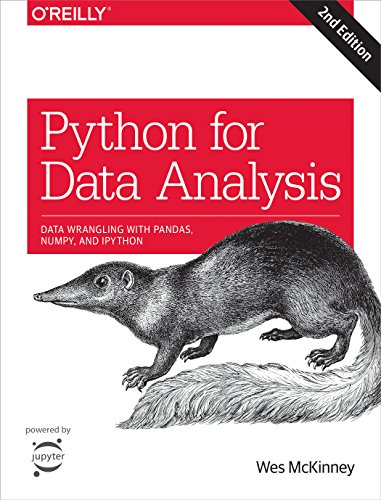Overview of Python for Data Analysis: Data Wrangling with Pandas, NumPy, and IPython by Wes McKinney Link to heading
Summary Link to heading
Python for Data Analysis by Wes McKinney is a comprehensive guide aimed at providing readers with the necessary skills to perform data analysis using Python. The book primarily focuses on the libraries Pandas, NumPy, and IPython, which are powerful tools for data manipulation and analysis. It covers a range of topics from data cleaning, preparation, and transformation to data visualization. McKinney, who is also the creator of the Pandas library, introduces readers to efficient techniques for handling data, offering a hands-on approach with practical examples.
Review Link to heading
The book is highly regarded in the data science community for its in-depth and practical approach to data analysis using Python. One of its primary strengths is the clear and concise way it explains complex concepts, making them accessible to both beginners and experienced users. The inclusion of real-world examples helps reinforce the application of the techniques discussed. However, some readers have noted that the book may require a basic understanding of Python programming as it does not cover programming fundamentals in depth.
Key Takeaways Link to heading
- Pandas as an Essential Tool: Understanding how to use Pandas to manipulate and analyze data efficiently.
- NumPy’s Role: Leveraging NumPy for numerical operations and handling large datasets.
- Data Wrangling Techniques: Learning techniques for data cleaning and preparation to ensure data quality.
- Interactive Analysis: Utilizing IPython for interactive data analysis and experimentation.
- Best Practices: Implementing best coding practices for maintaining and organizing data analysis code.
Recommendation Link to heading
Python for Data Analysis is an excellent resource for data analysts, data scientists, and Python developers who want to enhance their data manipulation and analysis skills. It is particularly useful for individuals who are involved in handling large datasets and require efficient tools to manage and analyze data. Those with a foundational knowledge of Python will find it especially beneficial, as the book delves directly into leveraging Python’s libraries for data analysis tasks.
